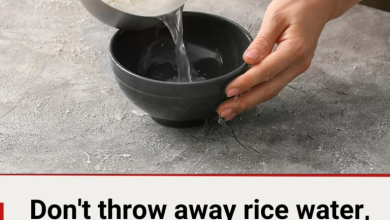
Even if you clean your kitchen religiously, chances are you might be making a few of these crucial kitchen cleaning mistakes. These kitchen cleaning tips can help your kitchen smell better, make appliances last longer, and prevent germs from spreading among your family.
1. You overlook handles and knobs
Your family touches handles on the fridge, microwave, and oven; door knobs; and kitchen cabinet pulls several times a day, so it’s no wonder these can get super germy. A 2013 study published in the journal Food Control found that various types of disease-causing bacteria, including listeria and E.coli, were detected on handles of doors, refrigerators, and dishwashers, for example, in 15 different houses. Make a habit of wiping down these oft-overlooked areas every night, says Debra Johnson, a Merry Maids national home cleaning expert.

2. You put sharp knives in the dishwasher
Sharp knives—especially those with wooden handles—shouldn’t go in the dishwasher. Each wash dulls and takes years off the knife. (Your dishwasher likely cleans with far more power than the knife needs). Hand wash knives (excluding those from your silverware) to prolong their longevity and keep their sharpness.

3. You clean your floors first
Do you vacuum or mop your floors before wiping down counters and cabinets? You’re making more work for yourself (because dust and crumbs from the counter will fall to the floor, making it dirty all over again). Merry Maids’ Johnson recommends a top-down cleaning pattern: dust shelving and cabinets first, then clean countertops, and finally vacuum the kitchen floor, then wipe with dry mop to ensure a truly dust- and crumb-free kitchen.

4. Shaking dirty laundry
If possible, do not shake your dirty laundry. This can release germs and viruses that can then spread through the air. This is advice you should definitely heed if you’re handling the laundry of someone who is or recently was sick.

5. Not wearing gloves when cleaning
Cleaning products contain ingredients that can irritate your skin, so it’s important to wear gloves when cleaning and disinfecting surfaces. Disposable gloves should be thrown out after use and not reused. If you wear reusable gloves, they should be used for cleaning and disinfection of surfaces only and nothing else.

6. Not cleaning your hands after using gloves
Even though you were using gloves, you used your hands to take them off, touching all the gunk and germs you just cleaned. Make sure to wash your hands after disposing of or putting away your gloves.

7. Not safely cleaning mold
Nobody wants mold anywhere near their house, and it’s important to get rid of it the right way to keep it away and prevent further damage or health issues. For hard surfaces, first spray the mold with a bleach and water mixture. Wait a few minutes and then rinse or wipe clean. Another method recommended by the EPA is scrubbing moldy areas with a detergent and water mixture.

8. Mixing bleach with other cleaners
Mixing bleach with ammonia or other cleaners is dangerous because it can form harmful compounds. Exposure can lead to irritation to the nose, eyes and throat as well as nausea.

9. Jumping straight to disinfection
All surfaces must be thoroughly cleaned before disinfection. This makes sure that germs and bacteria are not hidden from the disinfectant underneath a layer of dirt, residue or grime.

10. Not cleaning your couch
In most family homes, people spend a lot of time on the couch, and over time it can collect food, sweat, pet hair and many other things. Try to vacuum your couch every other week and pick up bigger pieces of trash or debris as you are vacuuming. Check the tag on your couch’s cushions to see whether or not spills or stains can be cleaned with water or a solvent-based cleaner.

11. Not washing pillows
Even if you use a pillowcase, dirt, sweat and dead skin build-up on your pillows. That is not good to have on your face every time you go to sleep. Many types of pillows can be cleaned in the washing machine. Your pillows should generally be washed twice a year. This is one way you can make your bedroom better for sleep.

12. Washing towels with fabric softener
Silicon in fabric softeners and dryer sheets can coat towels and actually make them water repellant, destroying their absorbency. Instead of using fabric softener when drying towels, many people swear by the household hack of using white distilled vinegar to make their towels soft instead.

13. Ignoring pet hair on furniture
Some people let their pets jump on everything and in every room in the house, which is great if you love dogs or cats. But pet hair tends to get everywhere as a result and can be difficult to clean up. One way to pick up pet hair off furniture is with a lint brush or a pet hair removal glove or mitt.

14. Skipping inside the microwave
Most people make sure anything that will have food on it is cleaned and sanitized, and the microwave should be no different. If you heat a bowl of water and white vinegar in the microwave, it will steam-clean the inside, loosening any buildup and making it easier to wipe down. This will make sure your leftovers or frozen foods are protected from germs and bacteria before they go in the microwave.

15. Forgetting light switches
Just like any surface that a lot of people use their hands to touch, light switches accumulate germs and bacteria. Try to wipe them down as often as you can with your favorite natural cleaning product.








